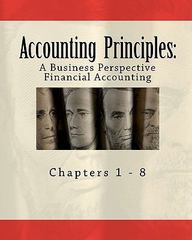Question
16.Under treatment A, costs are 100 in year 1 and 200 in year 2. Treatment B costs 200 in year 1 and 100 in year
16.Under treatment A, costs are 100 in year 1 and 200 in year 2. Treatment B costs 200 in year 1 and 100 in year 2. Which of the following is true?
A. For any positive discount rate, the net present value of costs is less
for treatment A than for B
B. For any positive discount rate, the net present value of costs is less
for treatment B than for treatment A
C. For any positive discount rate, the net present value of costs for A and
B Are the same
D. None of the above
17.If I choose a health intervention that is efficient.
A. I will have chosen a treatment that will be distributed equally to all
B. I will have chosen the least costly intervention
C. I will have chosen an intervention that will deliver the greatest health
benefit per unit of cost
D. I will have chosen an intervention that will deliver the least health
benefit per unit of cost
18. If I include direct treatment costs, labor productivity costs, costs of informal care giving, costs to insurers, and quality of life to patients as part of my economic evaluation, then it is most likely the case that the perspective of the analysis is;
A. From the insurer perspective only
B. From the provider perspective only
C. From society's perspective
D. From the patient perspective only
19. Ed is indifferent between A) a 50-50 gamble of winning $500 or $0 and B) $250 guaranteed. Based on these preferences, I would conclude that
A. Ed is a risk lover
B. Ed is risk averse
C. Ed is loss averse
D. Ed is risk neutral
20. Consider two treatments. Treatment A costs $20,000 per life-year saved and treatment B costs $40,000 per life-year saved. Treatment A
is given only to people with health insurance. Treatment B is given to all. If I choose treatment B over A, then it is reasonable to conclude
A. That efficiency matters most to me.
B. That equity considerations are important to me
C. That I care neither about equity or efficiency
D. None of the above
21. Budget Impact Analysis is a:
A. variant of Cost-Effectiveness Analysis
B. complement to Cost-Effectiveness Analysis
C. increasingly required by prior to formulary approval or reimbursement
D. both B and C
22. Budget Impact Analysis is comprised of _____ elements for the modeling framework from inputs to results.
A. 4
B. 6
C. 10
D. None of the above
23. Budget Impact Analysis _____.
A. estimates the financial consequences of adoption of new health care setting.
B. predicts a cost change in the use of a technology.
C. answers the question of affordability
D. is used by payers and integrated delivery networks
E. all of the above.
Step by Step Solution
There are 3 Steps involved in it
Step: 1

Get Instant Access to Expert-Tailored Solutions
See step-by-step solutions with expert insights and AI powered tools for academic success
Step: 2

Step: 3

Ace Your Homework with AI
Get the answers you need in no time with our AI-driven, step-by-step assistance
Get Started


